At TalentCentric, we’ve all led talent acquisition teams – almost twenty between us, and it’s a tougher job than it appears.
Recognition is rare – it’s often like working in a kitchen where you’re only noticed when a plate is dropped.
Talent teams are highly efficient hiring engines, delivering cost-effective results for volume recruitment. As technology has advanced, the focus has shifted to measurable metrics—data and KPIs. These KPIs push talent teams toward volume over quality – quantitative not qualitive – leaving minimal space for creativity, and interesting work; and often we had the tools but not the time to use them properly.
Constantly juggling multiple priorities, with the top focus on keeping the pipeline full; low-volume, high-impact roles such as leadership and specialised positions presented a significant problem – we lacked both the time and incentive to make 65 calls just to generate one top-tier candidate. Finding candidates is amongst the 25 things TA has to juggle every day, finding high performers is not.
This creates a conflict of interest when high-volume roles demand all your attention, while hard-to-fill high impact or senior roles need an extra mile of effort. Most talent acquisition teams aren’t designed for this – when you dedicate too much focus on difficult roles, the rest of talent operations can start to falter.
These limitations more often than not, result in Sisyphean job descriptions and a low touch / high volume messaging approach on LinkedIn, because talent acquisition lacks the time to collaborate with hiring managers on a more nuanced approach.
This approach lacks rigor – relying on brute force rather than precision, making it an inefficient and inelegant process. Which always results in suboptimal recruitment for high impact roles; high performers, who are not in distress, can tell they are part of a much large cohort of messages and ignore them.
While it may be effective for lower-impact, high-volume roles, where mis-hires can be corrected with minimal disruption – it becomes a significant liability for high-impact positions, where a single mis-hire can ripple across the business.
